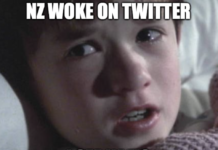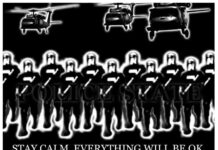The last radio reviews have focused on the racial and cultural exclusivity of RNZ and the National programme. This review is simply an outline for a replacement organisation to RNZ – one that will broadcast on TV as well. The most practical option is to task Maori TV – the best exemplars of public service broadcasting – to provide this. One state broadcaster for radio and television.
Charter
A bilingual non-commercial public service broadcaster, simulcasting each of their six channels on national radio and TV networks and online.
Channels
ART1 Korero/Conversation (Radio: AM,FM. TV: FV)
ART2 Waiata/Music (Radio: AM,FM. TV: FV)
ART3 Moananui-a-Kiwa/Pacific (Radio: AM,SW. TV: FV,Satellite)
ART4 Taonga Te Reo/Maori Heritage (Radio: AM. TV: FV)
ART5 Taonga Te Ao/International Heritage (Radio: AM. TV: FV)
ART6 Kawanatanga/Government (
Content Quotas/Targets
– for channels:
1,2,4,6: Min. 85% total local content of any type (incl. music)
1: Min. 70% talk.
2: Min. 70% music.
3: Min. 40% overseas(ie.Pacific Islands)-sourced/oriented;
4: All presentation in Maori language; min. 60% non-voiced-over/original Te Reo content.
5: All presentation in English language, min. 60% non-voiced-over/original English content, min. 20% non-English/non-Te Reo/non-Pacific content.
6: All sitting hours of House of Representatives broadcast live.
1,2,3,4,6: Min. 50% of on-air presenters are Maori/English bilingual.
1,2,3,6: News service: 24/7 hourly bulletins of min. 3 mins.
Establishment
ART1: RNZ National AM/FM radio frequencies + MTS Maori TV FV5
ART2: RNZ Concert AM/FM radio frequencies + TVNZ FV6
ART3: New AM needed + RNZ International shortwave frequencies + TVNZ FV7
ART4: AM needed + MTS Te Reo FV24
ART5: AM needed + TVNZ Heartland (currently on Sky only)
ART6: RNZ AM Network + Parliament TV FV22
Maori TV is to transition onto ART, which will include a merger of TVNZ’s legacy archive (currently running as Heartland on Sky) and will absorb RNZ’s assets after disestablishment.
Please discuss.






In the past maybe. But there are some deep problems and troubling questions about the administration and oversight of Maori TV at present.
What does the prefix ART mean? And why MaoriTV lead? What would happen to the concert programme? Why not a more cooperative approach between MaoriTV and RNZ?
I like the idea of synchronising Radio, TV and online broadcasting. That way you can transport your media entertainment across the various environments, and be able to listen whilst driving, cleaning or whatever, to a program you were watching on the TV earlier, recapping online later if you missed something.
If you follow sport, racing or serials, it would be a useful way of keeping abreast of developments without dropping the real world activities.
John: Sadly you are right about the CEO etc. (and Julian Wilcox political ambitions) and MTS is under-resourced to take on an enlarged role, but doable.
Dan: Why Maori TV lead? MTS is more aligned to future output than RNZ on most levels, esp. bilingual.
Jane: So cool you get the simulcast scenario. Came to this conclusion after listening to Mediaworks running their 6 o’clock 3News on Radio Live and listening to audio of movies and games shows – or like parliament has done – it works on both media.
Budgets and funding…
At present RNZ gets $32m pa from govt (via NZOnAir) and MTS gets $32m pa from govt (TeMangaiPaho $16m and direct govt. funding $16m). So combined have $64m. 25% of NZOnAir total $128m goes on RNZ; 30% of TeMangaiPaho total of $53m goes on MTS. So both NZOA and TMP combined with the $16m direct to MTS gives a total govt. broadcasting spend of approx. $197m.
To ensure independence editorially and operationally I would propose making ART a Trust under its own Charter that is funded independently of government. Being a good lefty means I would suggest a levy system independent of the two funding agencies for ART. Sliding scale ART Duty on new screens sold (paid at border), entitles buyer to membership of ART Trust electoral college for 5 years, can renew membership for 5 years if pay again. Unlike the hated old licence fee with stalking and monitoring etc, since every device/screen is deemed to have paid the duty on entry all buyer needs is the serial no./receipt to register that will get on purchase. Can do online. Envisage 6 out of 11 governors on board will be elected by these members, giving involvement and sense of ownership. At $25 mobile, $50 tablet/laptop/smallTV, $100 20″-50”, $50”+ $200 should give min. $20m pa. at least. And a Transmission, Frequencies and Cables Duty (TraFiC Duty) on all commercially allocated radio spectrum and all telecoms cables to raise at least $44m which would cover the rest of the funding needed on the basis that ART would get the RNZ+MTS funding of $64m.
Having looked over more reports I see RNZ National has a target of 350 hours pa of Maori language content and produced only 342, compared to overshooting on the other two categories. National radio only just makes its local music quota too – 34%. I see Maori TV has a target of 51% Te Reo and just makes it too at 52%. This is why quotas and targets are important to get right, they end up defining the channels; so perhaps having ART1 with 51% min Te Reo and ART2 with 51% min English as a balance?
In addition to the channels I would have a news service and an orchestra as the other significant expectations of ART, to be in the Charter.
As for concerns about subsuming one organisation into another, the only problem I have (since I am not concerned about the probable Auckland headquartering and the displacement of most RNZ staff and resources in the process) is the Treaty obligations, the Maori electoral college of MTS. This would have to be negotiated carefully, but is doable.
Comments are closed.